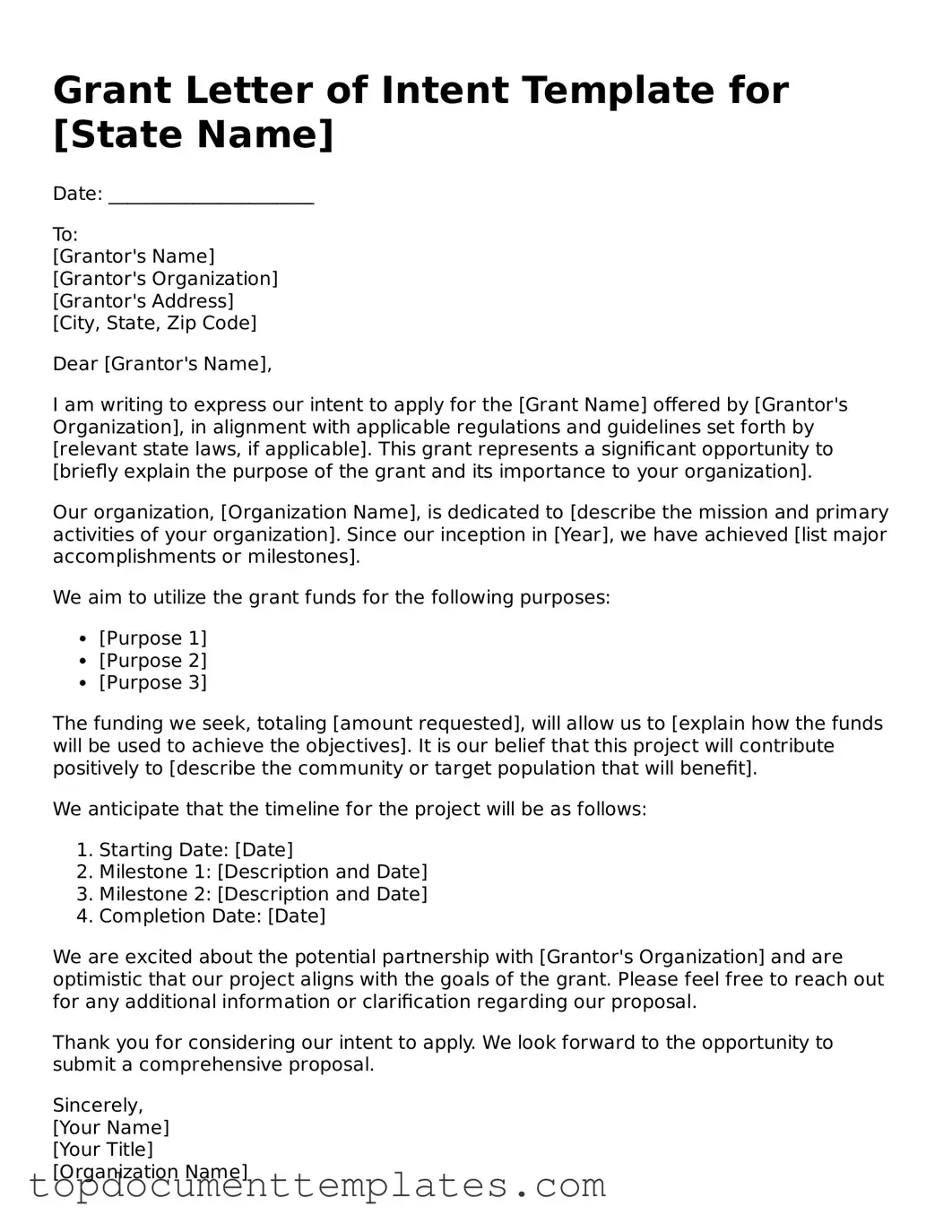When seeking funding for a project, the Grant Letter of Intent (LOI) serves as a crucial first step in the application process. This document outlines the intent of the applicant to apply for a grant, providing a succinct overview of the proposed project. It typically includes essential information such as the project title, a brief description of the objectives, and the anticipated outcomes. Additionally, the LOI often highlights the target audience and the need for funding, helping grantors understand the significance of the project. By clearly articulating the purpose and scope, the LOI sets the stage for a more detailed grant proposal, allowing funders to gauge the alignment of the project with their funding priorities. Moreover, it can serve as an opportunity for applicants to establish a connection with the grantor, showcasing their qualifications and commitment to the project's success. Understanding the components of the Grant Letter of Intent is vital for anyone looking to secure funding and make a meaningful impact in their field.
